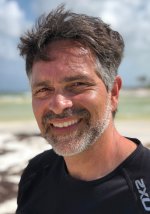Understanding the source of regenerative ability in animals
DeWitt Stetten Jr. Lecture | to

Alejandro Sánchez Alvarado, Ph.D.
Investigator, Howard Hughes Medical Institute
Investigator
Stowers Institute for Medical Research
For the past 20 years, Dr. Sánchez Alvarado has studied Schmidtea mediterranea, which he and a colleague obtained from an abandoned fountain in Barcelona, Spain. Their work helped bring this worm to the attention of fellow developmental biologists. Today, it’s one of the go-to organisms for studies of regeneration, stem cells, and embryonic development. Born and raised in Caracas, Venezuela, Dr. Sánchez Alvarado received his Bachelor of Science degree in molecular biology and chemistry from Vanderbilt University in 1986, and his doctorate in pharmacology and cell biophysics from the University of Cincinnati College of Medicine in 1992. He conducted postdoctoral research at the Carnegie Institution of Washington’s Department of Embryology. In 2008 he was named a National Academy of Sciences Kavli Fellow, and in 2009 he received an NIH MERIT Award. Dr. Sánchez Alvarado is a member of the American Academy of Arts and Sciences and the Latin American Academy of Sciences. He was elected to the National Academy of Sciences this past April. NIGMS has supported Dr. Sánchez Alvarado’s research since 1998.
Summary
Salamanders and starfish might be “simpler” than humans, but they far surpass us in one major way—the ability to regenerate tissues and regrow lost limbs. Dr. Sánchez Alvarado studies regeneration using the flatworm planaria Schmidtea mediterranea. Remarkably, when halved or quartered this organism can clone itself from the pieces. More than 100 years ago, that feat captured the attention of geneticist Thomas Hunt Morgan, who studied planarians years before his famed work on fruit flies. As astonishing as the planarian regenerative capacities are, Dr. Sánchez Alvarado thinks we all have a bit of “planaria” hidden in our genomes. “You and I are turning over a number of cells equivalent to our body weight every year,” he says. “I lost billions of cells yesterday, but this morning I still recognized myself in the mirror. That’s because basic mechanisms are in place to retain our original form and function.”
This page was last updated on Wednesday, August 11, 2021